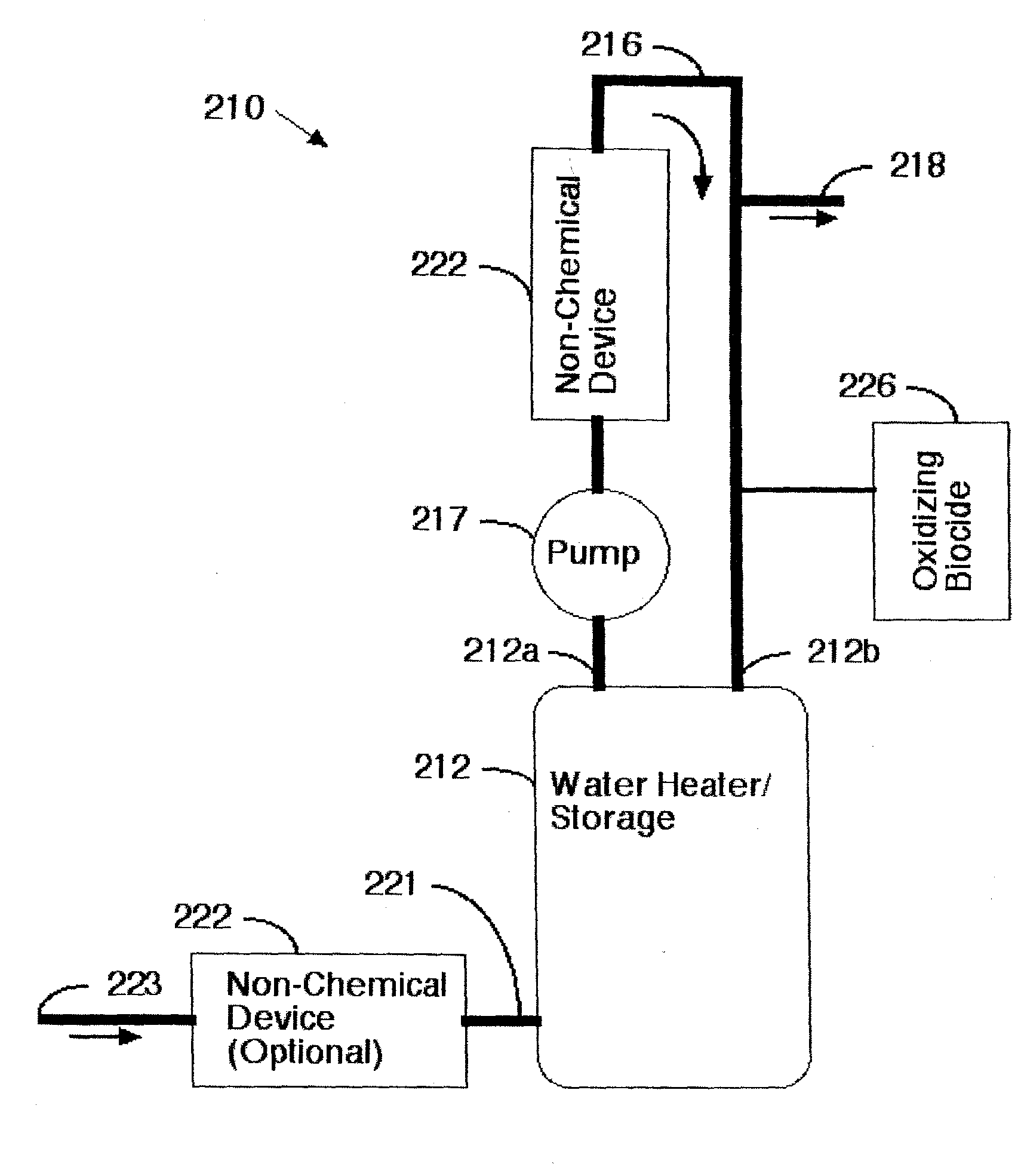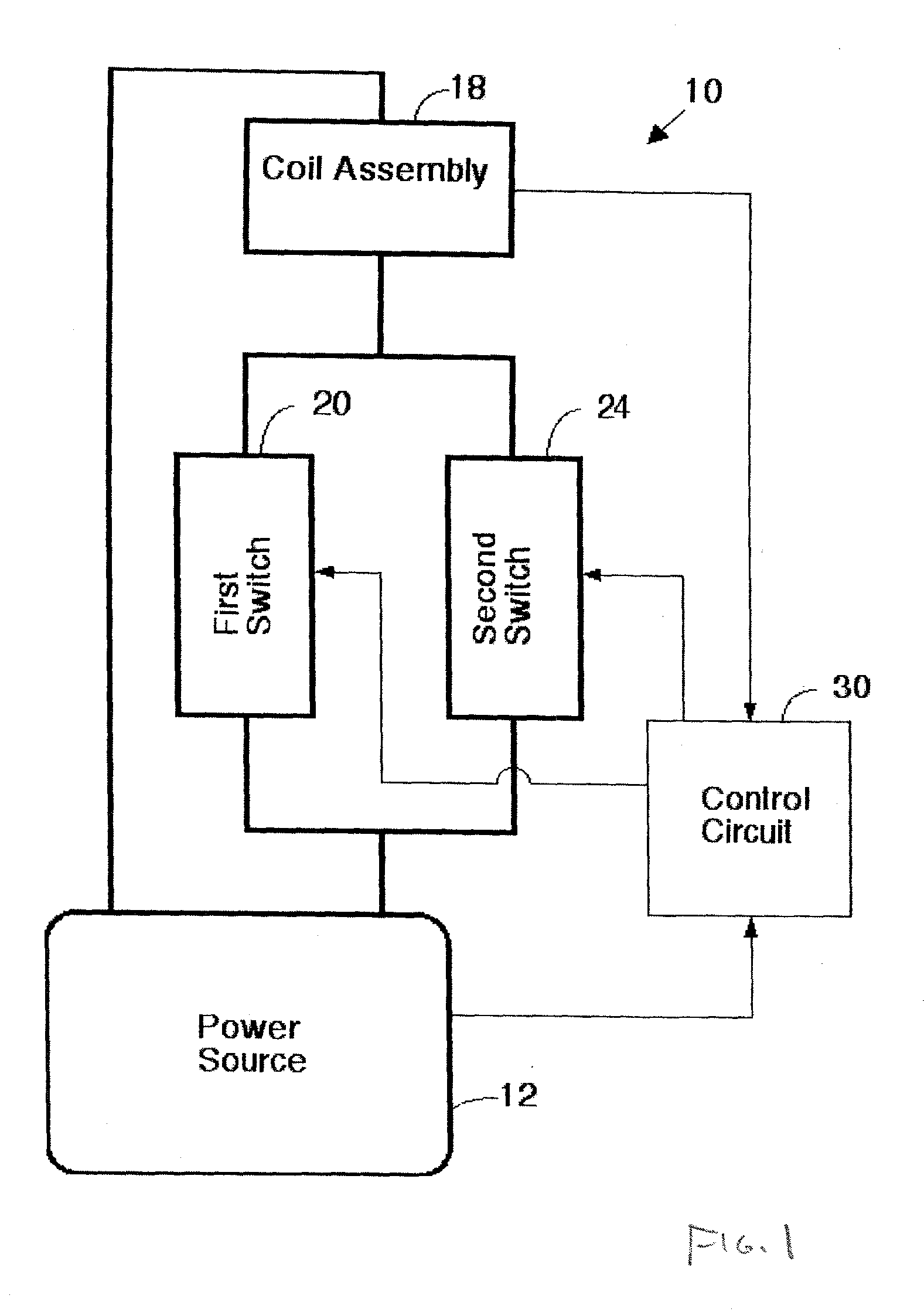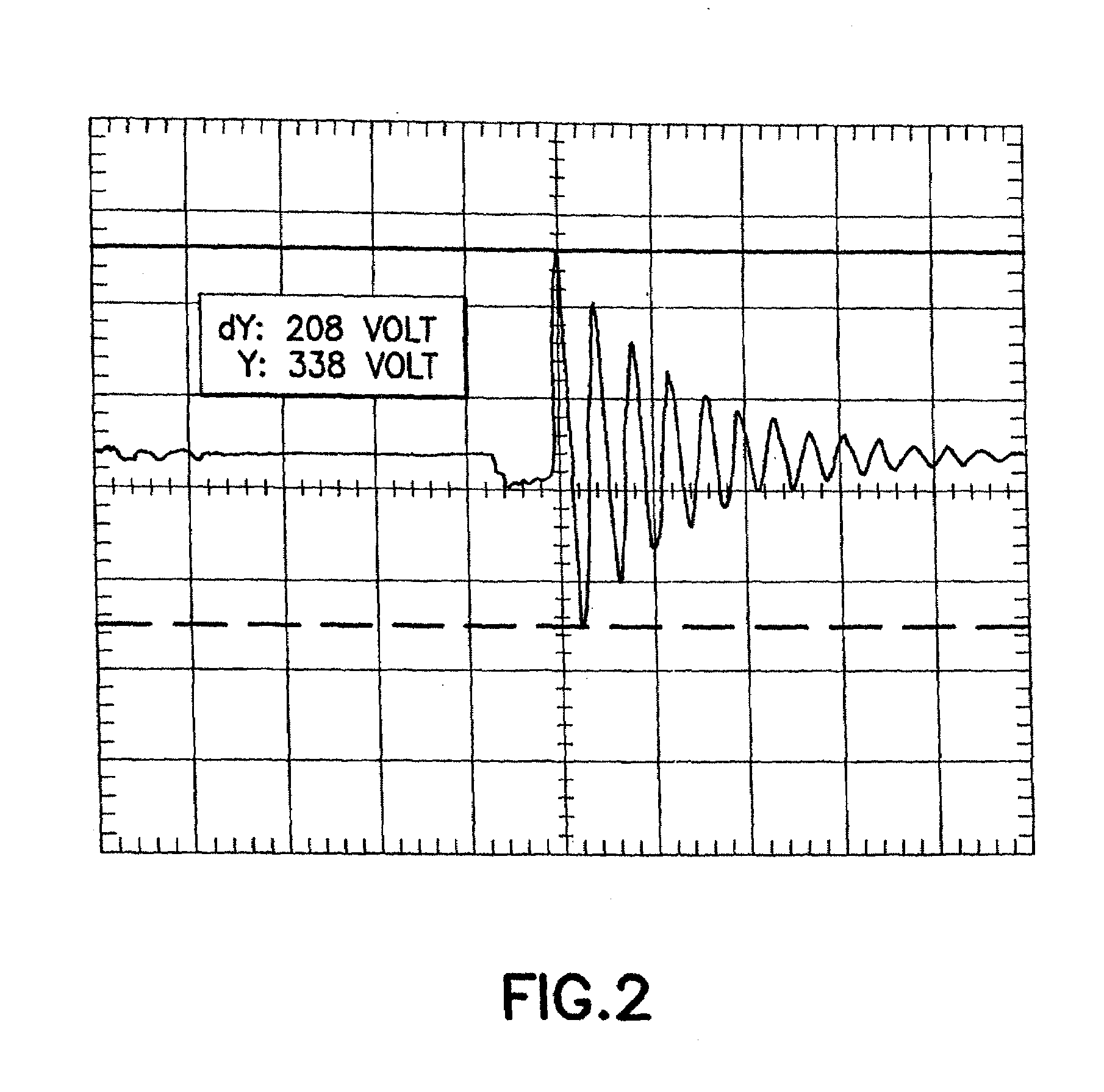Pulsed power water treatment
a technology of pulsed power and water treatment, which is applied in the direction of heating types, domestic hot water supply systems, and separation processes, etc., can solve the problems of high cost, insufficient chlorination in the hot water system, and multiple fatalities, so as to achieve rapid and effective killing of biofilm and/or legionella bacteria, rapid and continuing control of bacteria, and minimal cost
- Summary
- Abstract
- Description
- Claims
- Application Information
AI Technical Summary
Benefits of technology
Problems solved by technology
Method used
Image
Examples
Embodiment Construction
[0031]This invention resides in the combination of technologies from various fields, namely, non chemical water treatment devices for utility water systems and bactericidal treatments for the control of Legionella bacteria in recirculating, hot, potable water systems. The invention comprises the combination of a non-chemical water treatment device with an intermittent chemical water treatment program for the purpose of controlling Legionella bacteria in a recirculating, hot, potable, water system.
[0032]To overcome the limitations in the treatment of recirculating, hot, potable, water systems for the purpose of controlling Legionella and other harmful bacteria of stand alone chemical and non-chemical water treatment programs, the invention, in its most basic form, comprises a method for the treatment of Legionella and other harmful bacteria in recirculating, hot, potable, water systems in which the water to be treated is subjected to treatment by an oxidizing biocide and a non-chemic...
PUM
| Property | Measurement | Unit |
|---|---|---|
| Frequency | aaaaa | aaaaa |
| Frequency | aaaaa | aaaaa |
| Time | aaaaa | aaaaa |
Abstract
Description
Claims
Application Information
 Login to View More
Login to View More - R&D
- Intellectual Property
- Life Sciences
- Materials
- Tech Scout
- Unparalleled Data Quality
- Higher Quality Content
- 60% Fewer Hallucinations
Browse by: Latest US Patents, China's latest patents, Technical Efficacy Thesaurus, Application Domain, Technology Topic, Popular Technical Reports.
© 2025 PatSnap. All rights reserved.Legal|Privacy policy|Modern Slavery Act Transparency Statement|Sitemap|About US| Contact US: help@patsnap.com



